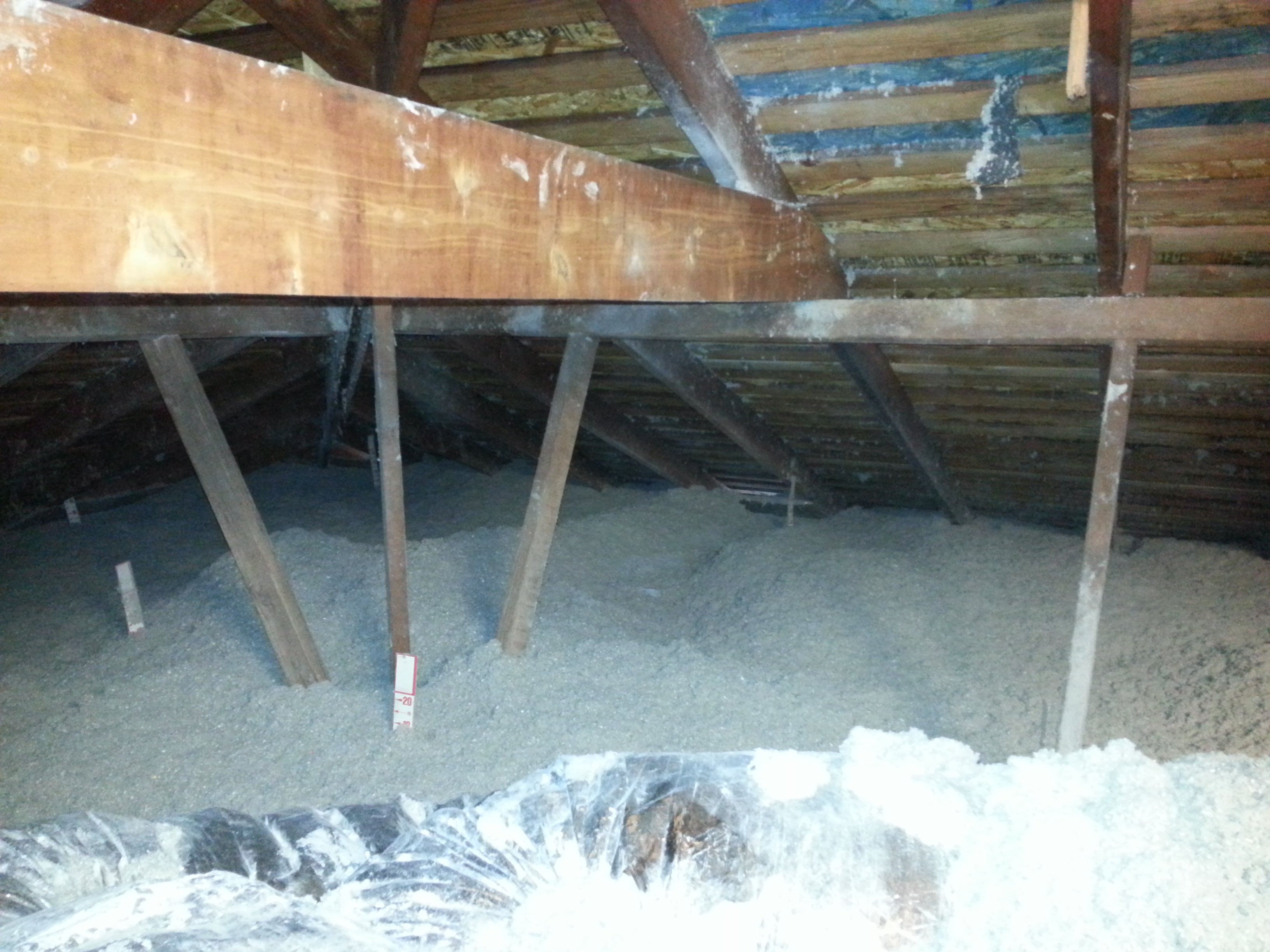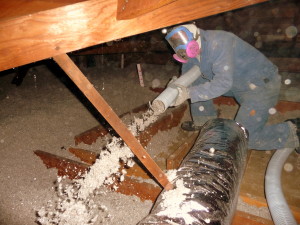 We could spend all day comparing different types of insulation materials, but when it comes down to it, cellulose insulation is just the best all-around, especially in practice. It’s Eco-friendly, cost-effective, safe, easy to install around uneven surfaces, and even provides good sound dampening. We at EPB like to take it a step further and use stabilized cellulose. Stabilized cellulose minimizes dust, which makes it so our installers can see what they are doing and install properly, settles a fraction of the amount normal cellulose does, and greatly reduces “slump” (regular cellulose can gradually shift under its own weight, leaving gaps).
We could spend all day comparing different types of insulation materials, but when it comes down to it, cellulose insulation is just the best all-around, especially in practice. It’s Eco-friendly, cost-effective, safe, easy to install around uneven surfaces, and even provides good sound dampening. We at EPB like to take it a step further and use stabilized cellulose. Stabilized cellulose minimizes dust, which makes it so our installers can see what they are doing and install properly, settles a fraction of the amount normal cellulose does, and greatly reduces “slump” (regular cellulose can gradually shift under its own weight, leaving gaps).
Since the 1970s, when insulation boomed due to the oil embargo, we’ve had ample time to see how different types of insulation degrade over time. We’ve also come to learn that some types of insulation are hazardous or environmentally harmful. Asbestos, of course, is the first example that comes to mind. Fiberglass, in many forms, is also hazardous when disturbed and can lead to respiratory problems. Additionally, fiberglass batts, which can look good on paper, almost always prove to be terribly ineffective in practice. The problem is, uneven surfaces make it nearly impossible to install any type of batt insulation effectively, so they are extremely situational.
So we come back around to cellulose. This stuff is made from recycled newspaper and added fire retardants. It has the highest percentage (75-85%) of recycled materials of any insulation type, and those materials are the most abundant as well, making it the most renewable form of insulation. For example, fiberglass uses a maximum of 50% recycled materials, and those materials are less abundant to begin with. Also, it has insignificant environmental impact, during both manufacture and installation. Spray foam, on the other hand, usually uses blowing agents that emit HFCs or HCFCs, which are a major contributor to ozone depletion and not good for indoor air quality.
Even if you don’t care about environmental benefits, cellulose has great cost-effectiveness and versatility. It easily fills in uneven spaces around framing and other irregularities, which are present in every building. It has the best cost per R-value (foam can have higher R-value per inch, but is much more expensive). It can be sprayed into empty wall cavities behind drywall. In a new construction or renovation setting where drywall is off the walls, it can be sprayed in wet to each stud bay and allowed to dry. It also has the highest fire safety rating, due to the borate treatment. Cellulose can also improve air sealing, helping tighten up your home. Also, cellulose can qualify you for LEED certification points. Finally, cellulose has better sound dampening than other low-cost insulation types.
The main disadvantage to blowing dry cellulose, or fiberglass, is the inability to see what you are doing while installing. Standard cellulose is blown dry and the dust is so bad that installers routinely miss spots and fill at the wrong level. But it turns out, we can add a little bit of water sprayed inline with jets to the stabilized cellulose, and greatly reduce the dust in the air. We use a special blend of cellulose that the manufacturer makes specifically to add water to it. The difference is night and day to blowing regular cellulose. With stabilized, the dust is so low that it seems like you don’t even need a mask, but you should always wear one when installing insulation. You can see from the picture on the left that there is almost no dust in the air. Amazing product!
[dropshadowbox align=”none” effect=”lifted-both” width=”640px” height=”” background_color=”#ffffff” border_width=”1″ border_color=”#dddddd” ]For more information, call (925) 363-4498 or e-mail info@epbuilders.com to speak to a technician, or schedule an energy audit.[/dropshadowbox]


Speak Your Mind